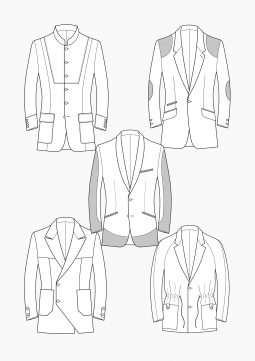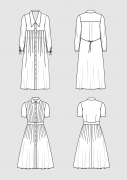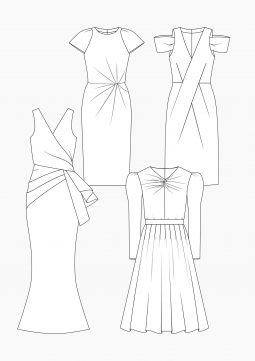The Japanese Kimono
Deutsch
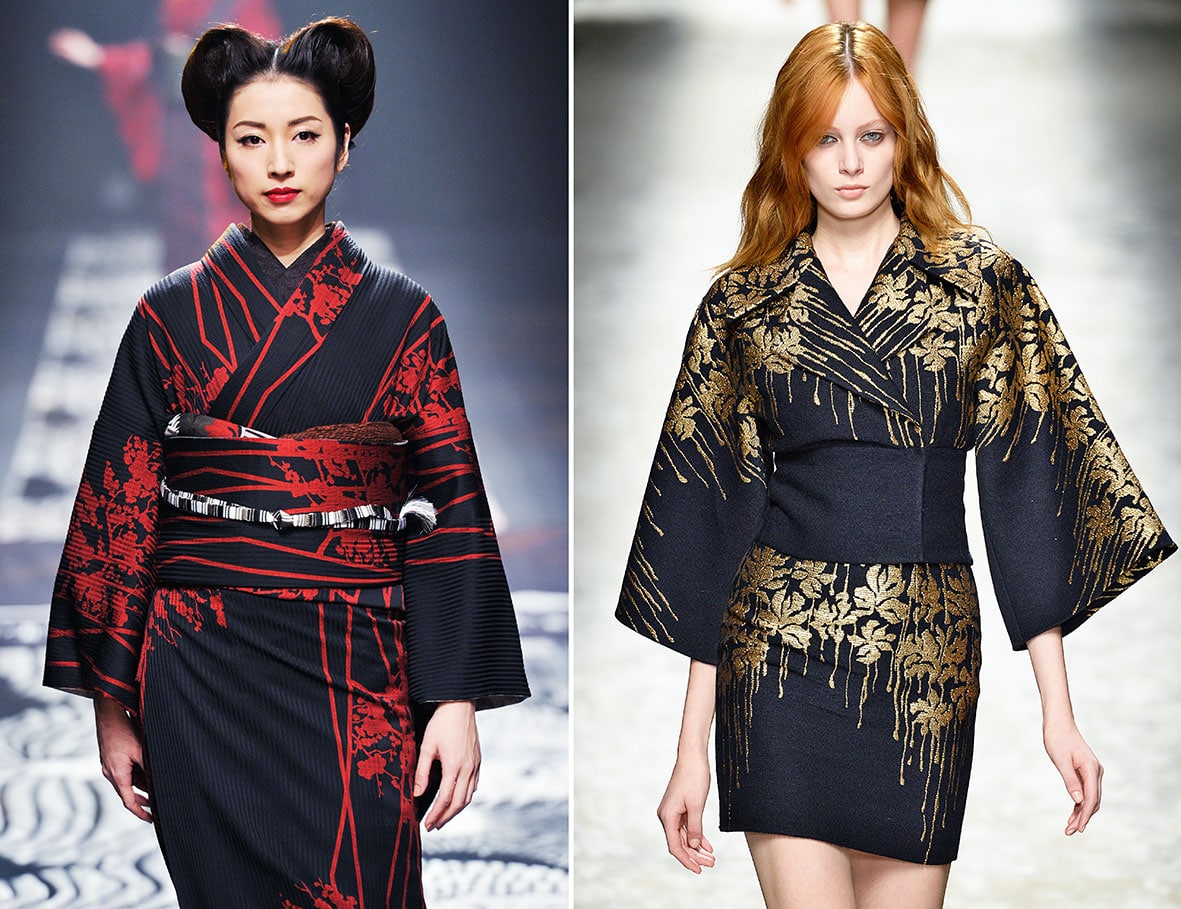
The Japanese term “kimono” literally means “thing to wear”. The term kimono traditionally refers to the complete clothing including underwear, socks and shoes. In the Western world, however, the term kimono refers to the traditional Japanese garment with wide sleeves and without fasteners. The kimono is worn ankle-length and closed left over right. When putting it on, make sure that the collar protrudes a few centimetres from the neck. The width and length of the Japanese bales of fabric determine the pattern and size of the kimono. The woven fabric strips are each between 36.5 cm and 39 cm wide and about 12 m long. One bale of fabric is just enough for an everyday kimono. As little cutting as possible is done so that the woven edges are preserved and the seam allowances do not have to be neatened up. Depending on body height and hip circumference, the strips of fabric are sewn with more or less seam allowance in order to adjust the size.
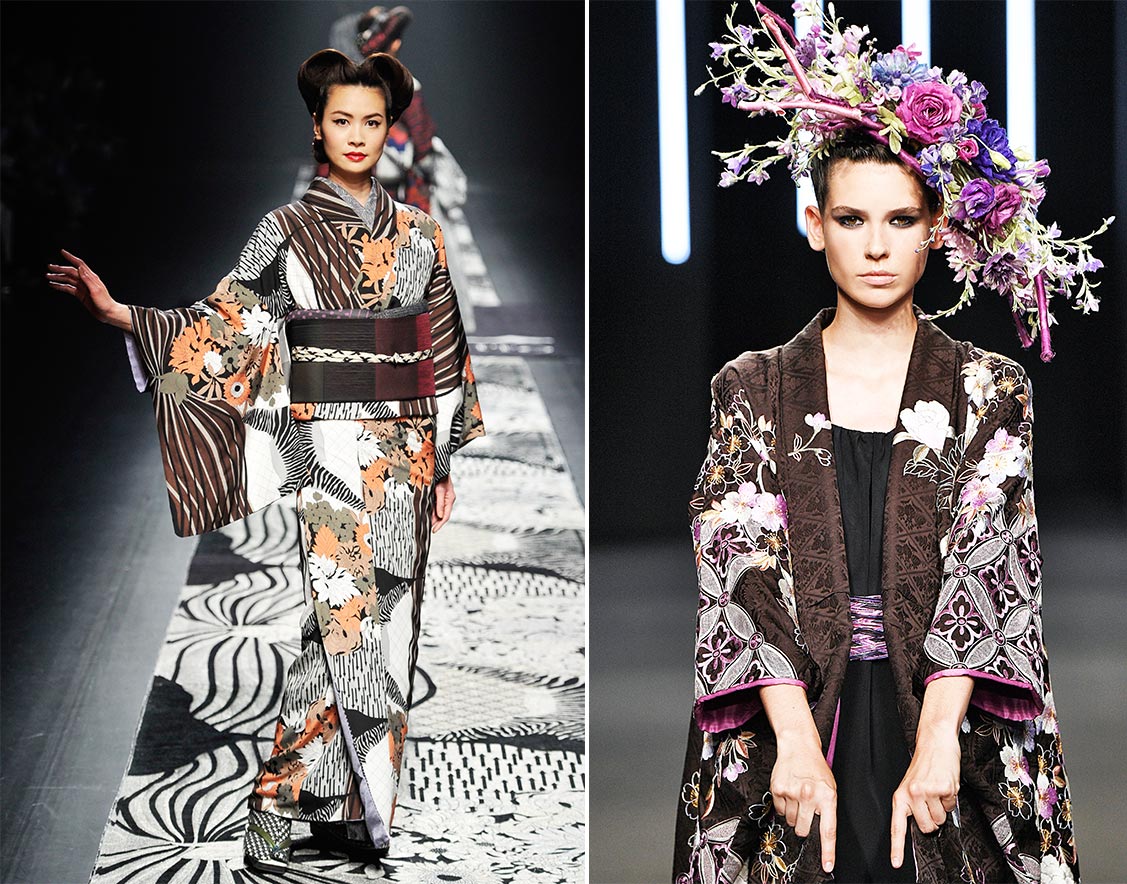
Which fabric qualities are used depends on the particular occasion and kimonotype. For festive occasions, the kimono is naturally made of silk. There are different qualities such as Tsumugi (raw silk woven from dyed silk strands), Rinzu (monochrome woven, printed or painted silk damask), Habutae (black, very firm silk fabric for formal occasions), Sha (silk in loose weaving technique). Wool kimonos are worn in autumn and winter for everyday use. In the warmer season, cotton and linen kimonos are used. Artificial silk and other synthetics are also increasingly used for informal occasions, as they are easy to care for and inexpensive.
Pattern Construction of a Kimono
How to construct the pattern of a traditional japanese kimono with obi we show here.

1 front and back part:
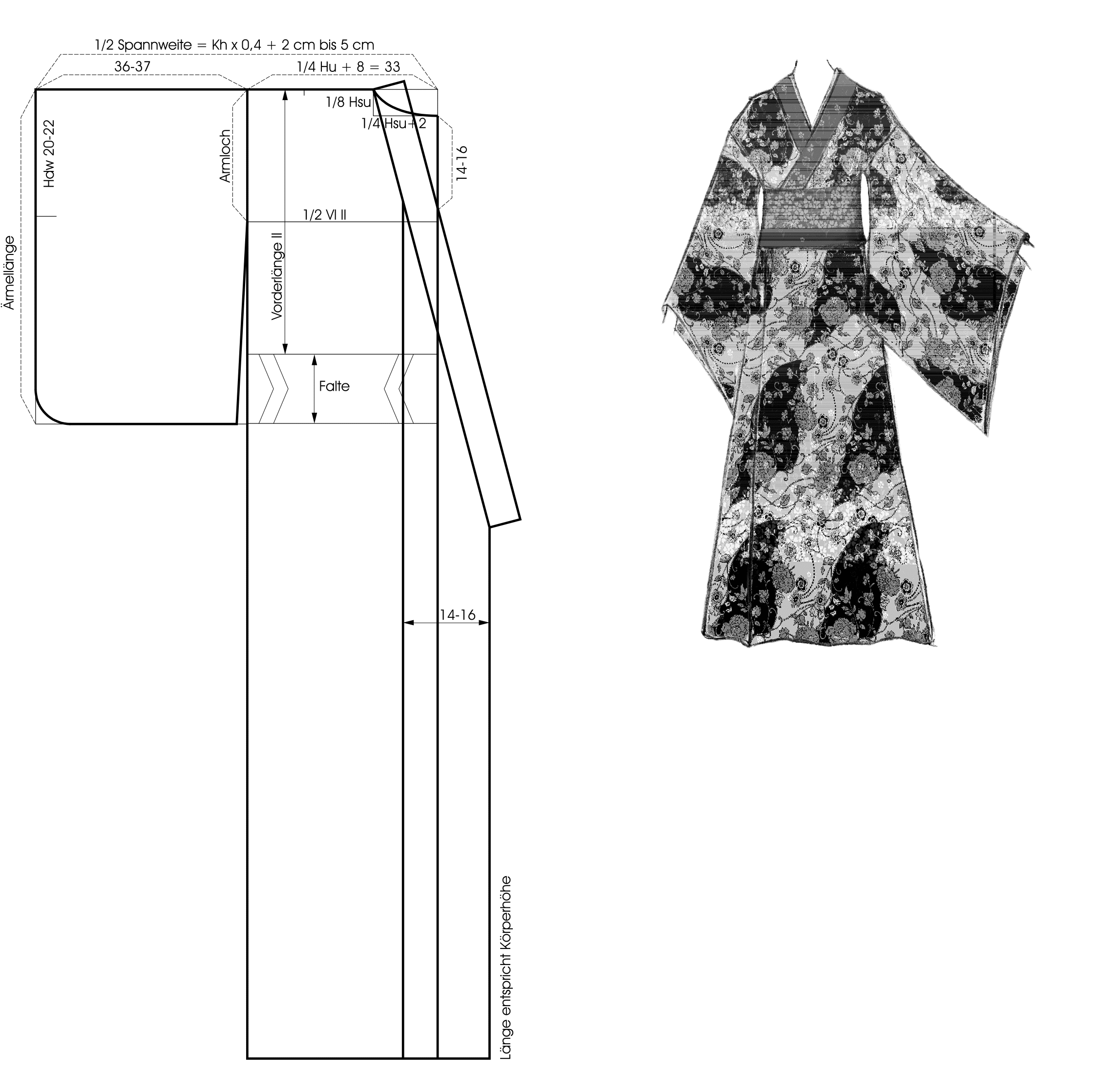
Measure the length downwards on a vertical baseline and angle it. Measure the circumference (Hsu) from the output 1/8th of the neck base downwards and bend to the left. Measure neck mirror with 1/4 neck base circumference + 2 cm to the left and bend upwards to the starting height. Draw the Rt-neck hole as shown in the drawing. Measure the shoulder width with 1/4 hip circumference + 4 cm to 8 cm from the vertebra point to the left. Choose the allowance according to body measurements. The shoulder width plus seam allowances should not exceed the width of the fabric ball. For very strong or large figures we recommend a special design with wider fabric panels.
Extend the shoulder seam to 1/2 span. The span can be measured or calculated from wrist to wrist. In the western area the sleeves are worn slightly above the wrist. The sleeve width plus seam allowances should not exceed the width of the fabric ball. Angle down from the shoulder width and the sleeve width. Set the sleeve length as desired. Mark hand width. Determine armhole height with 112 cm front length.
The pleat below the front length indicates the amount which is laid down and bound as a pleat from the length upwards when the kimono is turned over and tied. Set the neckline depth at the centre front at 14 – 16 cm and draw the collar according to the pattern. The finished collar width varies from 5 cm to 9 cm. Draw in the front seam and overlap as shown in the drawing. Measure the neck hole in the back and lengthen the collar strip accordingly.
2 Pattern Pieces
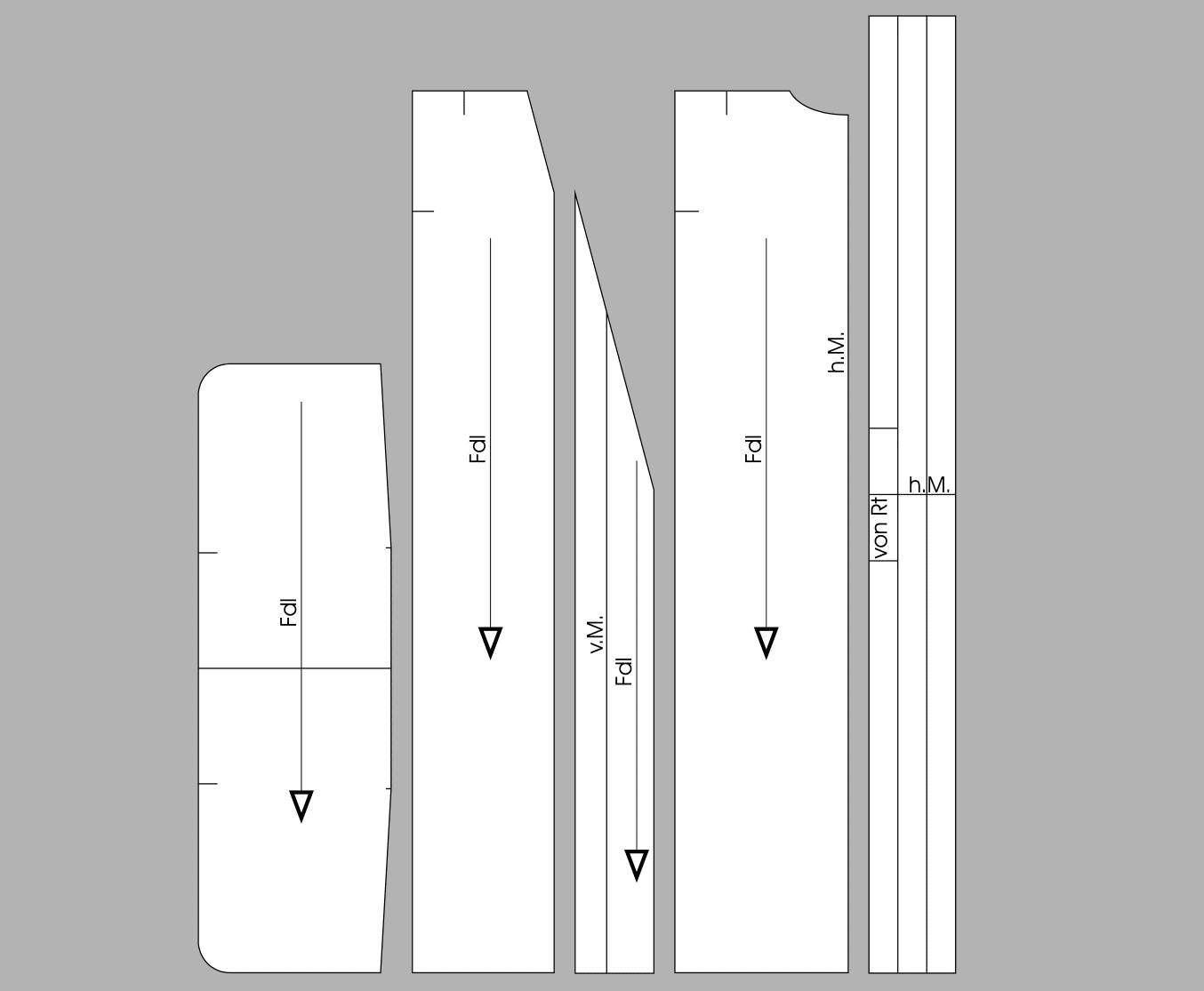
Copy out all pattern pieces. Mirror sleeves. Measure the neckline in the back part and lengthen the collar accordingly. Mirror collar. Even out all seams. Specify thread run.
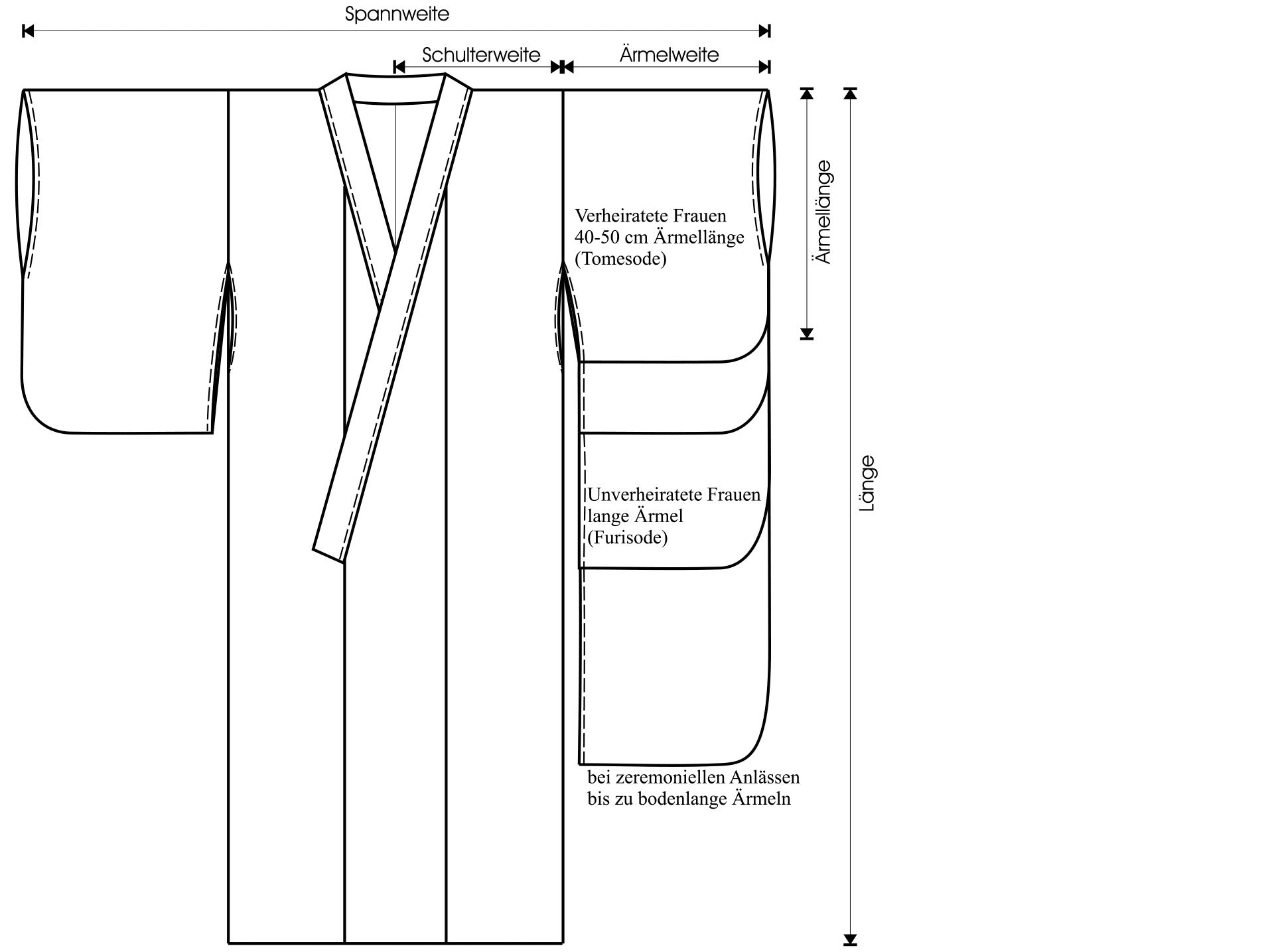
The length:
The length of the kimono is at least equal to the height of the wearer. For very large or strongly built figures, the length can even be determined with a little addition to the body height. The kimono is put on so that the hem hangs just above the feet. Then the kimono is tied to the hips with a soft band. The overhanging length is placed in a pleat and fixed with the fabric sash, the obi.
Sleeve length:
The sleeve length of a kimono is determined by the wearer’s marital status and the ceremonial occasion. Married women wear their kimono with shorter sleeves of about 40 to 50 cm length (Tomesode). Furisode Kimono (Furi=swinging, Sode=sleeves) is a kimono with long, swinging sleeves for young, unmarried women. The sleeve length of the furisode varies from 75 cm to 105 cm.
Variations of the sleeve length in Furisode kimonos:
Co-furisode:
Furisode with shorter sleeves (75 cm)
Chu-furisode:
Furisode with half-long sleeves (90 cm)
Oh-furisode:
Furisode with long sleeves (105 cm) In order to transfer the ratio of sleeve length to body height to western sizes, the sleeve length can be calculated using the following formulas:
Tomesode = Kh/3 + (-2 cm to +5 cm)
Furisode = Kh/3 + 20 cm to 50 cm
Apart from the length of the sleeves, kimonos differ in the chosen colour and pattern combinations and the respective fabric quality.
The kurotome style (kuro = black) is the most formal kimono for married women. It is deep black and is worn with white obi. The Irotomesode (iro = colour) is unicoloured with a pattern only below the obi. The Komon (small pattern) is an everyday kimono with a fine, recurring pattern. It is suitable for married and single women.
3 Obi / Belt
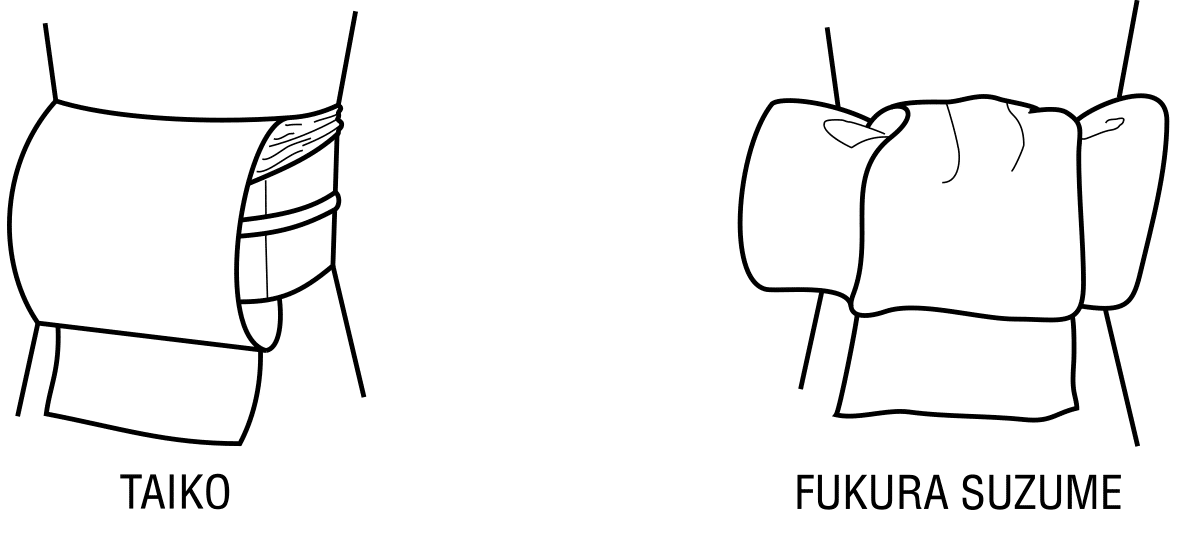
The kimono is tied with a sash made of fabric, the obi. The Fukuro Obi is the standard Obi, 27 cm wide and 4 m long. For formal occasions the Maru Obi is used, 65 cm wide and 4 m long. There are many different ways to tie the obi. The Taiko knot is the traditional Obi knot. It is worn with a cylindrical obi pillow, which is fixed with an obi scarf, the obiage. The obi is held with an obi cord, the obijime. Another knot is the Fukura Suzume, which is tied more like a bow. Which obi-knot goes with which kimono depends on marital status and age of the wearer. The traditional obie cushions are worn more by married women. The bow obi, on the other hand, is more often used on kimonos worn by unmarried women. However, the traditional borders are no longer as strict and often the obi-knot is tied at will.
You will find many more pattern instructions and patterns for sewing in our online shop.


